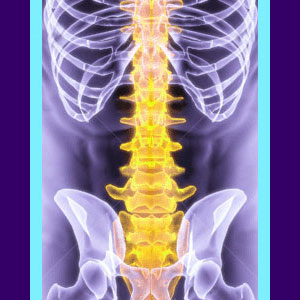
Recurrent back pain is a term generally reserved for conditions which come and go often, but do not cause constant painful symptoms. The typical clinical profile of a recurrent condition describes a patient who endures regular or semi-regular bouts of acute back pain, while making a full recovery in between attacks. This is very different than patients who must deal with chronic back pain, non-stop, every day of their lives.
During the first 10 years of my own back ache saga, this was the type of pain which plagued me most. I would endure regular recurrent flare-ups of symptoms, while making a mostly complete recovery in between bouts of torture.
This essay discusses recurring pain syndromes that might last for many years, causing suffering to all who are affected by them.
Recurrent Back Pain Syndrome
Recurrent pain syndromes can affect any part of the body, but are most famous for existing in the back and spine. Recurring pain is sometimes the direct result of an injury or disease process which has left the region highly susceptible to painful relapses or re-injury. However, this scenario is rare, since healing is the most basic of all anatomical functions and is certainly one of the best performing, as well. Even extreme back injuries most commonly heal with time and should not leave the patient especially open to a recurrence of pain and suffering.
Be objective if you constantly re-inure your back doing seemingly innocent and harmless activities. So many people suffer recurrences of symptoms while simply standing, sitting, bending or even lying down. These cases make little sense from an anatomical point of view. Sure, a recurrence after a car accident or serious fall… that is logical. But terrible pain after merely picking up a sock? Hardly likely to be a purely structural trigger.
Mindbody Recurrent Back Pain
Recurrent pain is very limiting, since patients generally build up a large amount of fear and insecurity about their future. An affected individual might have trouble planning their life past today, since they are never sure when the dreaded pain will return.
“My back went out again!” This is a typical description of a recurrent acute back pain condition, which can strike at any time and seems to come at the least opportune moments in life. This is surely not a coincidence, since recurring pain is often an indicator of a well hidden subconscious causation. Acute pain might come on fast and furious, without warning, and sometimes for no apparent reason at all. These are all markers of a psychoemotional source of misery lurking just beneath the level of consciousness. This is the precise reason why knowledge therapy is so successful in resolving long standing recurrent pain syndromes, even when traditional medical back pain treatments have all failed.
Ending the Cycle of Recurring Back Pain
I lived this nightmare for many years during my chronic lumbar back pain journey. When I was younger, my pain would mostly come and go and I would feel quite normal in between acute attacks. As I got older, my pain took on a more sinister chronic profile, which I now know is the general rule for people with recurrent pain. It seems that regular bouts of suffering do not fulfill the symptom imperative after some time and chronic pain begins to keep the poor soul focused on their agonizing body every minute of every day. This has been my reality for decades. Sound familiar? I bet it does to many of you reading this.
There is a way to beat the unpredictability and agony of your painful back. You must simply understand that finding the definitive source of symptoms is paramount for making a lasting recovery. Without this basic determination, the hope for a cure is virtually nil.
Be sure to look at your pain honestly and apply all rules of logic you have learned over your lifetime. Is your pain logical? Is it seemingly nonsensical? Many recurrent pain issues can not be explained away from their triggers or suspected source conditions. Be sure to consider this fact when doing your research and then talk to your doctor. Share your findings and work together to determine the true source of pain. Then, apply the best treatment to end the misery. If you can accomplish this task, your pain will likely end for good. True, statistics are against you, since the process is more difficult than it first appears to be. However, it is not impossible. Keep working and you will get there.





